Niger: Trees are key to restoring
land, building incomes
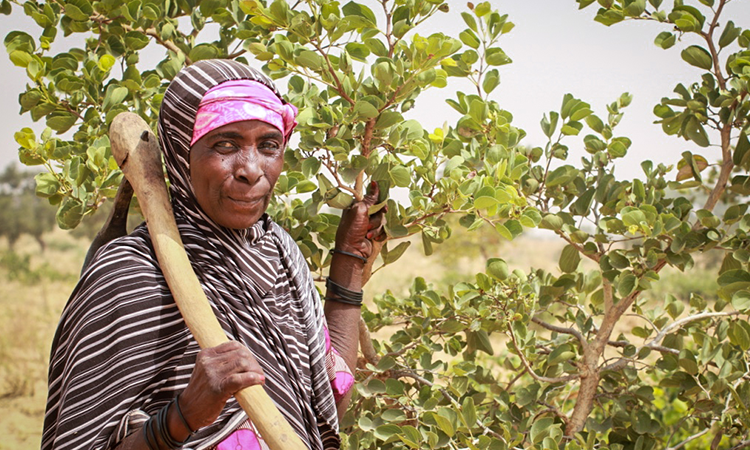
Niger: Trees are key to restoring
land, building incomes
In Tambarawa village, Niger, harvest time is ending. Under a clear blue, cloudless November sky, cattle draw wooden carts piled high with bundles of sorghum and millet along the dusty road. Women pull millet off the stalk, pound it in an oversized mortar and pestle, then toss it in the air so the chaff will blow away.
In this ochre-colored village of mud-brick walls, there’s nothing in sight that would have been out of place tens, even hundreds of years ago. Yet, says Yahouza Harouna, 35, in the past four years, “Everything has changed.”
Yahouza’s words tumble out like ripened grain. “Four years ago, I had just three hectares of land and all I knew was basic farming. That year I harvested 80 bundles of crops,” he says, “but now I can get 250 bundles. The land is much more productive now.”
Yahouza traces the changes in his life and fortune to the advent of LAHIA, a USAID-Food for Peace-funded program implemented by World Vision in partnership with Save the Children. Along with business and agriculture training, LAHIA introduced him to the benefits of cultivating trees.
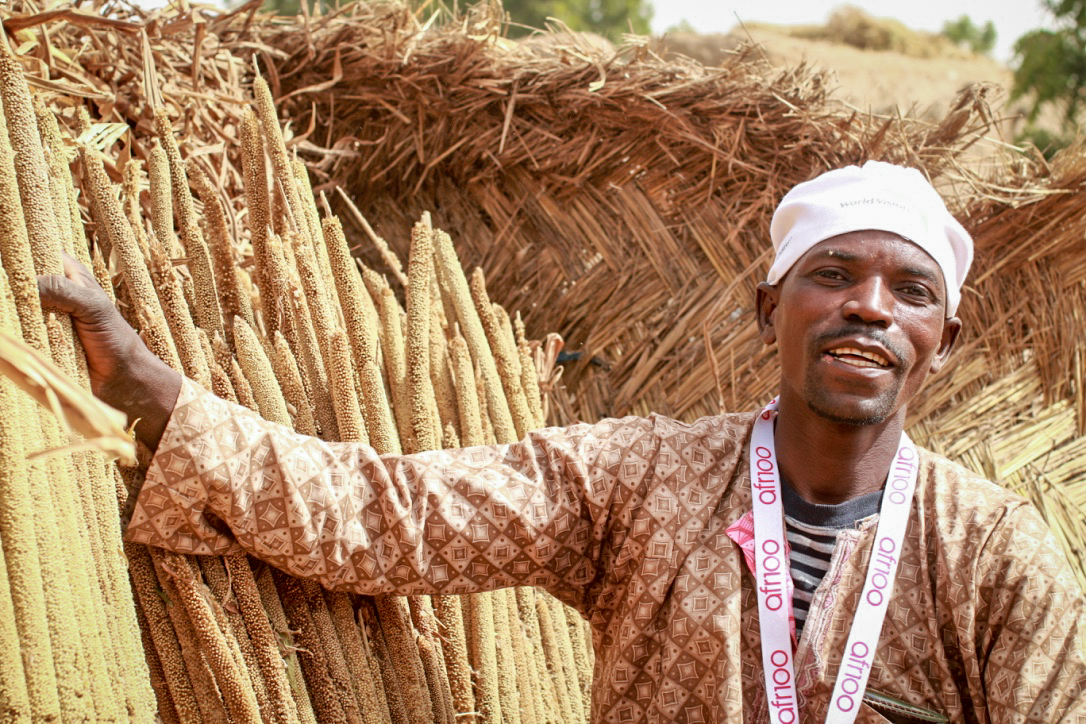
Trees hold back the desert
Why trees, and what do they have to do with Yahouza’s bountiful harvest of millet, sorghum, and cowpeas?
Samaila Harouna, 62, Tambarawa’s village chief, explains that trees hold the soil, keep in moisture, and increase soil fertility, both through adding organic matter and attracting animals and insects. Careful re-cultivation of trees that had been cut down to clear land for farming is the key to restoring the natural process of building fertile soil. The technique is called Farmer Managed Natural Regeneration (FMNR) and it originated in Niger.
Salamatou Ilia, 65, demonstrates how it works. She attacks what looks to be a shrub with a sharp-bladed, short-handled hoe. “I cut out most of the stalks and leave only one or two growing,” she says. The leafy stalks she cut she’ll leave on the ground to compost and to keep the sandy soil from blowing away.
“These stalks I’m leaving will grow, and after a while, I can cut one for firewood. Then, in a few years, there will be a tree, like this,” she says, pointing to a 15-foot specimen nearby.
“A native tree, Piliostigma reticulatum,” says Ilia Mamane, World Vision’s team leader for LAHIA in Maradi region, who trained in forestry. “It has fruit that will drop to the ground later. Animals will eat it. You can cook and eat the seeds, too.”
“Look there,” he says, pointing to the ground under the tree. Squatting, he and Salamatou conduct a tour of the tree-shaded mini-ecosystem. “Flowers and leaves have fallen, enriching the soil,” he says, lifting a handful of pale dirt covered with a thin layer of black and brown specks.
“And look where termites ate the leaves,” says Salamatou, pointing at a crusty dirt mound. Such small things are restoring the land to productive use. “When I do FMNR, I am fighting to keep the land from turning to desert,” she says.
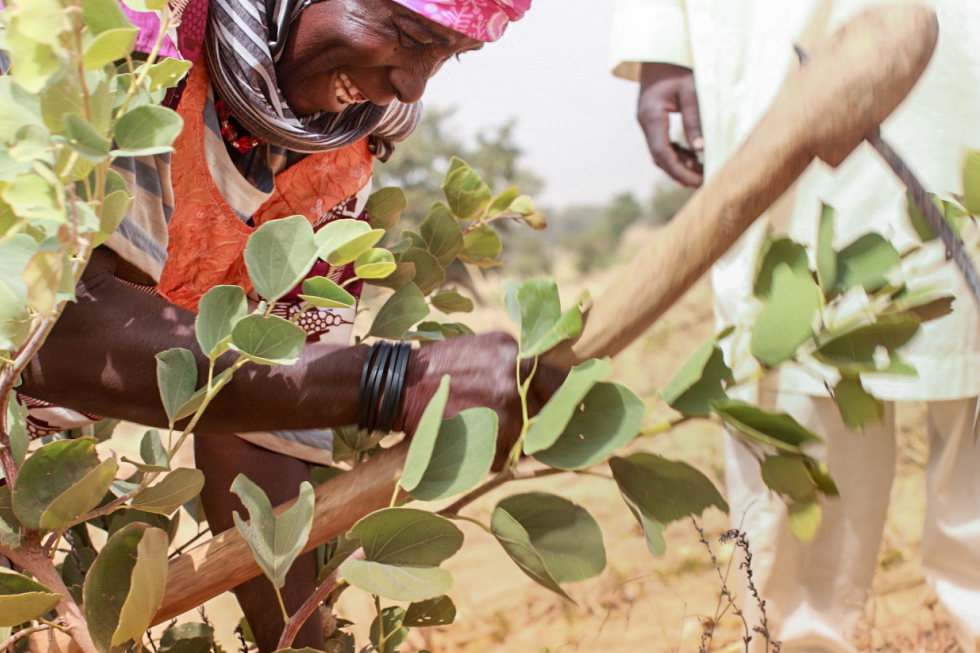
Saving land and livelihoods
Since the 1970s, cutting trees for firewood, overgrazing, wind erosion, and drought have turned diminished Niger’s arable land. Only about 15 percent of the country’s land mass, a narrow strip in the south, is fit for farming. Yet four fifths of Niger’s adults depend on agriculture for their livelihoods and to feed their ever-growing families.
Niger has the world’s highest birthrate, an average of 7.6 children per woman. Massive population growth puts pressure on family farmers to produce more food on smaller and smaller pieces of land. Farm plots average 4.1 hectares.
Salamatou, a mother of nine, has 120 trees on her three hectares of land. Like most smallholder farmers, she plants millet, sorghum, and cowpeas between the trees. Those three crops, which are grown on 85 percent to 90 percent of Niger’s farmland, depend on good rains from June to September. One failed rainy season or a family illness could wipe out farmer’s assets. Farmers who sell their crops soon after harvest when the market is flooded and prices are low may not have money or food during the lean season.
As they tend fields and flocks with techniques that build up the land, farmers like Salamatou and Yahouza who participate in the LAHIA program fend off environmental and economic decline. Diverse sources of income strengthen family’s resilience.
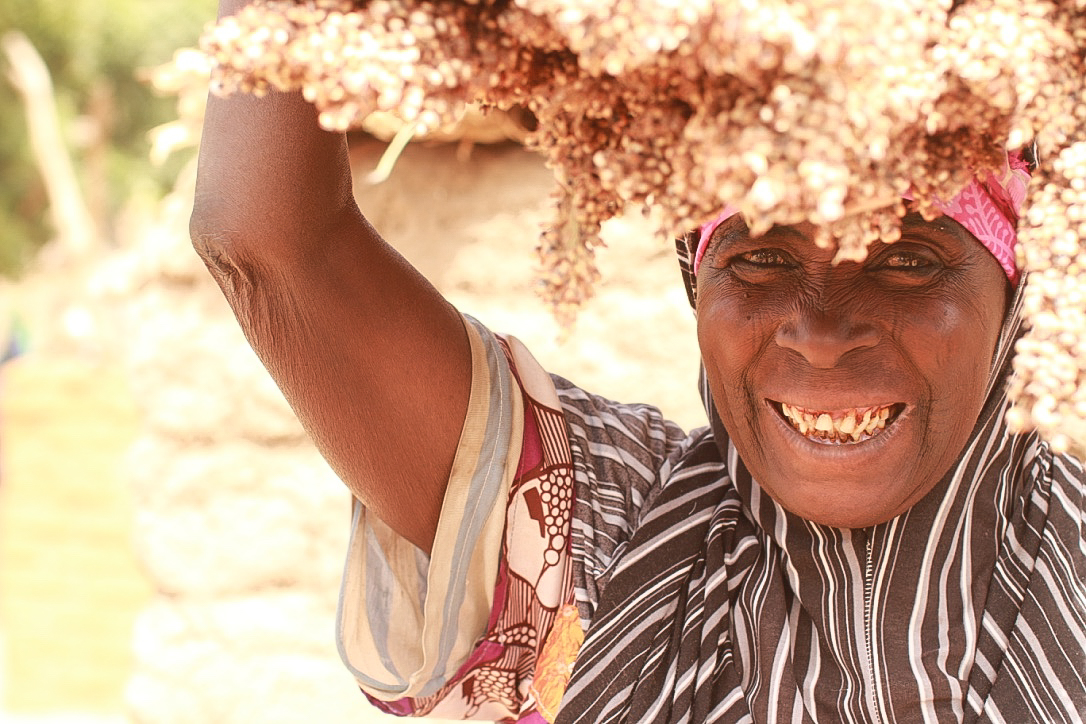
Grow more, store more
After four years of improving the soil through FMNR, Salamatou has more than doubled her yield, from 20 bundles of grain to 50. “That’s enough to eat and to sell,” she says. Before she began cultivating trees, using improved seeds, and organic fertilizer, she could only grow enough to feed her family.
“We are doing this work in the field to nourish our children,” she says as she points her hoe at another sprouting tree stump. She’s a rare landholder among the women of her village, having inherited her small plot from her family. Now that she’s made it profitable and diversified her income, Salamatou has set her sights on buying more land to cultivate.
“I also do warrantage,” she adds. That means she stores some of her crop and uses it for collateral for a bank loan. She can use the loan for expenses, but most of it she’ll use for money-making projects, like cooking and selling cowpeas and rice, or fattening goats to sell.
“After four or five months, when the price of millet has gone up, I’ll pay off the loan, get my millet out of storage and sell it,” she says confidently. Salamatou’s goats, fat and sleek from eating the stalks of her cowpea crop, contribute to the next harvest, too. In April, when it’s time to prepare for planting, she’ll load composted goat manure in a cart and take it to her field for fertilizer.
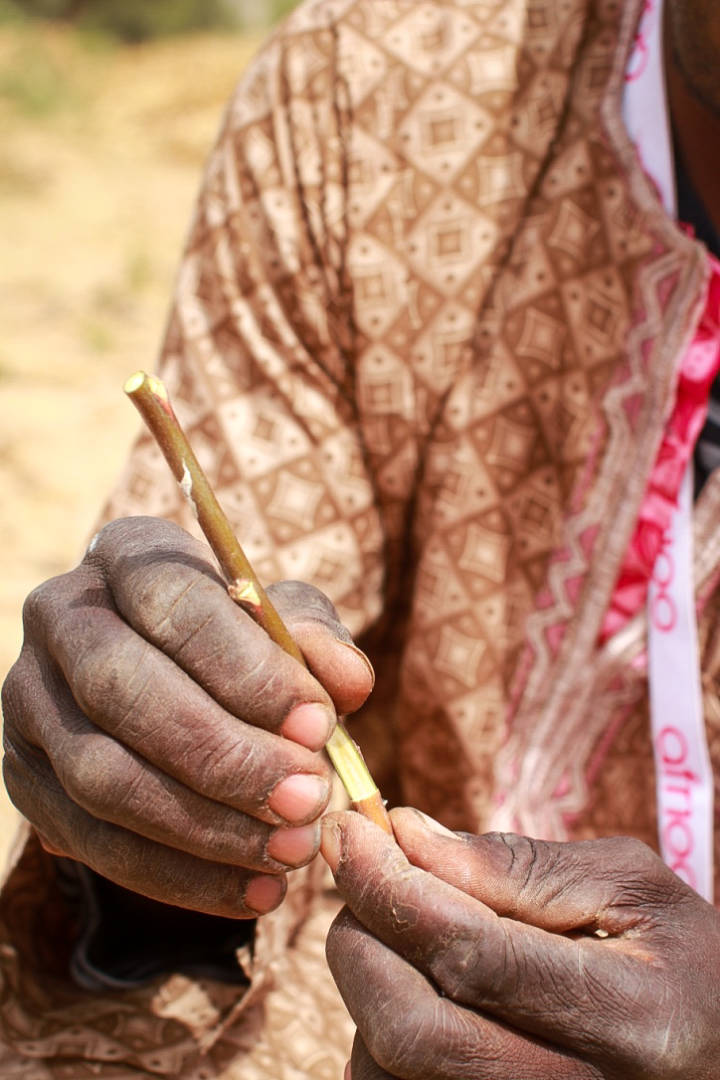
From farmer to entrepreneur
Yahouza says his life looks nothing like it did when subsistence farming was all he knew. He doesn’t worry about providing school fees for three children, or food, clothes, and medical expenses for the whole family.
Business training from LAHIA taught him to diversify his income activities so he’s not totally dependent on rain-fed crops that could be wiped out by drought or pests.
“Now I understand how to use what I have for increase,” he says. He bought land for an orchard. He bought animals and fattened them to sell at a profit. He hired laborers to work in his fields and a shepherd to take his livestock to pasture.
For him, too, the transformation started with trees.
“When I started (with FMNR), I had only 13 trees. Now I have 60,” says Yahouza. And what trees they are.
“Pomme de Sahel, the ‘magic tree,’” says Ilia, as Yahouza lifts a leafy branch on a four-year-old tree to show the ripening golf ball-size fruit. Yahouza has learned how to graft a large, tasty Sahel apple onto a hardy, native rootstock. The native’s bitter berries are no bigger than a pencil eraser and just as hard and unappetizing.
“Some of these grafted trees have big fruit, some have many fruits, and some are very sweet. I decide which to graft by the market demand, so I’ll go for the sweet one,” says Yahouza. Market sellers transport his fruits more than 400 miles to Niamey, the capital city, and across the Nigerian border to sell. “Last year I made about 500,000 CFA ($906) from fruit,” he says.
Yahouza demonstrates his grafting technique, deftly wielding a knife to cut a branch not much bigger around than a drinking straw and strip off all but the topmost leaves. He uses his hoe to cut back a native Sahel apple sprout to one stem and notches it so he can wedge in the sharpened branch, then wraps the two pieces together with plastic. If the graft takes, his new tree will bear fruit by next year.
“People offer to pay me to graft trees for them,” he says, but he refuses. He tells them, “I won’t do it for you, but I’ll teach you.” Grafting techniques are like the other things Yahouza’s learned that brought changes to his life, he says. “To benefit, you have to take them in your own hands.”
Since 2012, the LAHIA program has introduced Farmer Managed Natural Regeneration, improved seeds and farming practices, warrantage, and other business and marketing techniques to villagers in Niger’s Maradi region, along with health and nutrition programs to help them build food security and resilience.
This project is made possible by the generous support of the American people through the United States Agency for International Development (USAID). The contents of this article are the responsibility of World Vision, Inc. and do not necessarily reflect the views of USAID or the Unites States Government.